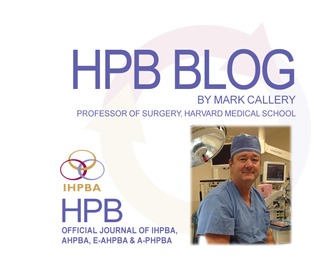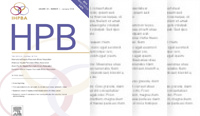International Hepato-Pancreato-Biliary Association
HPB Blog, February 2017

In its February 2017 issue now available on line, HPB offers its readership a systematic review and an exciting blend of original articles sure to please. During editorial review and now better while reading the published content, I have been struck by the depth and quality of the studies as well as the practical and timely knowledge they provide. Next month, we will feature several articles from the Sao Paolo IHPBA 2016 symposium on Minimally-Invasive Pancreatic Surgery. Stay tuned for those… you won’t be disappointed!
Groot et al systematically review the safety and efficacy of various treatment options for isolated local recurrences after pancreatic cancer surgery. They evaluate 18 studies involving 313 patients. I summarize their findings a bit more in my monthly highlight. Multidisciplinary tumor boards (MDTB) are becoming commonplace worldwide in cancer care. Are they effective in HPB malignancies? Brauer et al find their MDTB altered decision making in 25% or cases, but added costs mostly upon imaging, and didn’t’ improve care or outcomes for patients. I think MDTB are about the tough cases. For me, these are the borderline resectable pancreatic cancer patients. With MDTB input, I, and my patients gain so much, and we build longitudinal care. That’s great.
For H. Liver, we find Goutte’s report examining across 2000 patients for the implementation and efficacy of laparoscopic left lateral sectionectomy. Good news for those older as Leal et al show that liver resections for colorectal cancer metastases to the liver should and can be resected in best selected patients. Chapelle et al teach us how to properly measure expected liver function around hepatectomy.
For P. Pancreas, the multi-institutional effort led by Vollmer now explains the cost implications of pancreatic fistula post pancreatectomy. Predictive modeling helps with patient care, but also with cost-effective resource allocation. With the report of Cusworth et al, we learn that most complications following pancreaticoduodenectomy are actually pancreas related and may not have been picked up by formal risk calculators. Finally, the Pittsburgh stellar leadership effort to advance robotic pancreatic surgery is at view for efficacy with obese patients.
For B. Biliary. An especially substantive issue of offerings this month for our journal. Macedo et al consider how patients, especially of advanced age, should be best managed with acute cholecystitis. It is a great and fully practical paper to read. Watson et al from Leeds explain further the realities of surgery for gallbladder cancer. Kuzu and colleagues from Turkey offer a terrific paper to remind us of the guidelines, both good and not, around the management of common bile duct stones.
Enjoy your February 2017 issue, and thanks for supporting HPB. Also, please take a look at our Virtual Journal Club offerings for HPB. We hope they will facilitate learning and updating for our readership.
Mark P. Callery, MD, FACS
Professor of Surgery
Harvard Medical School
Corporate Partners
If you are interested in becoming a Corporate Partner of the IHBPA please contact industry@ihpba.org
Find out more


